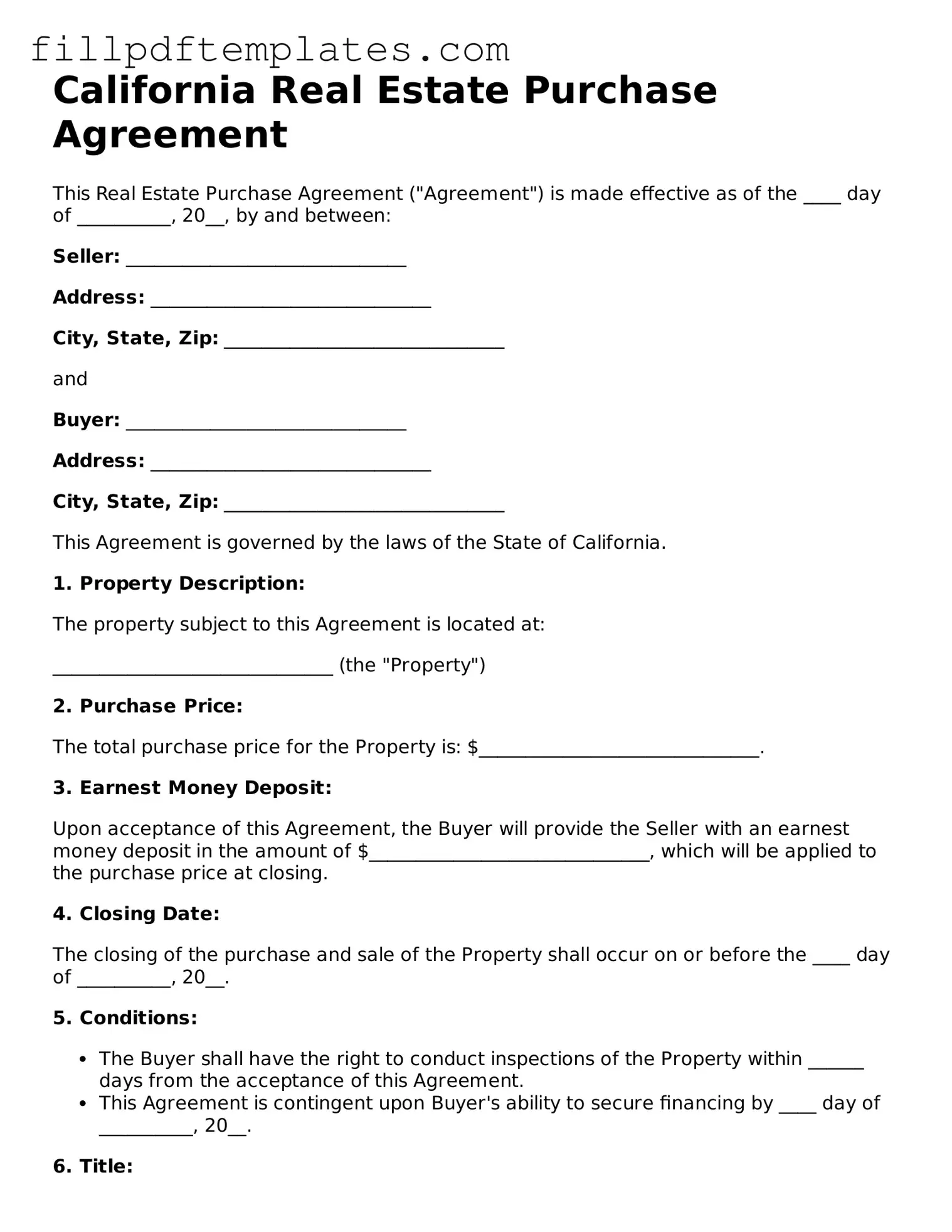California Real Estate Purchase Agreement
This Real Estate Purchase Agreement ("Agreement") is made effective as of the ____ day of __________, 20__, by and between:
Seller: ______________________________
Address: ______________________________
City, State, Zip: ______________________________
and
Buyer: ______________________________
Address: ______________________________
City, State, Zip: ______________________________
This Agreement is governed by the laws of the State of California.
1. Property Description:
The property subject to this Agreement is located at:
______________________________ (the "Property")
2. Purchase Price:
The total purchase price for the Property is: $______________________________.
3. Earnest Money Deposit:
Upon acceptance of this Agreement, the Buyer will provide the Seller with an earnest money deposit in the amount of $______________________________, which will be applied to the purchase price at closing.
4. Closing Date:
The closing of the purchase and sale of the Property shall occur on or before the ____ day of __________, 20__.
5. Conditions:
- The Buyer shall have the right to conduct inspections of the Property within ______ days from the acceptance of this Agreement.
- This Agreement is contingent upon Buyer's ability to secure financing by ____ day of __________, 20__.
6. Title:
Seller shall provide Buyer with a clear title to the Property, free from all liens and encumbrances except as noted in this Agreement.
7. Default:
If either party defaults in the performance of their obligations hereunder, the non-defaulting party shall have the right to seek remedies under California law.
8. Governing Law:
This Agreement shall be construed in accordance with the laws of the State of California.
IN WITNESS WHEREOF, the parties have executed this Real Estate Purchase Agreement on the date first above written.
Seller Signature: ______________________________ Date: ________________
Buyer Signature: ______________________________ Date: ________________
